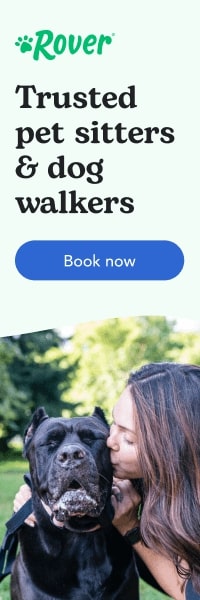Feeding your dog is essential for their health and happiness. Choosing the right food can make a big difference in their life.
With so many options available, it can be hard to decide what to feed your furry friend. Each dog has unique needs based on their age, size, and health. Understanding these needs is key to keeping them healthy. A balanced diet helps dogs maintain a healthy weight, boosts their energy, and supports their overall well-being.
This guide will help you navigate the world of dog food. You’ll learn about different types of dog diets, important nutrients, and how to make informed choices. Let’s dive into the best feeding practices for your beloved pet.
Table of Contents
ToggleIntroduction To Canine Nutrition
Understanding canine nutrition is vital for your dog's health. Good nutrition helps dogs grow strong and live longer. It affects their energy, mood, and overall well-being. Knowing what to feed your dog can make a big difference. This guide will help you choose the right food for your furry friend.
Why Nutrition Matters For Dogs
Nutrition is essential for every dog. It affects their physical health and behavior. A balanced diet supports a strong immune system. Proper nutrition can prevent many health issues.
Dogs need different nutrients. Proteins, fats, vitamins, and minerals are all important. Each nutrient plays a role in their body. Good food helps dogs maintain healthy skin and shiny coats.
Dogs that eat well are more active. They enjoy playing and exploring. Good nutrition can also improve their mood. Happy dogs are more likely to bond with their owners.
Components Of A Balanced Dog Diet
A balanced dog diet includes several key components. First, proteins are crucial. They help build strong muscles and support growth.
Fats provide energy. They also help absorb vitamins. Healthy fats keep your dog's coat shiny.
Carbohydrates offer energy too. They help with digestion and keep your dog full. Fruits and vegetables add vitamins and minerals.
Water is also a critical part of a dog's diet. Fresh water should always be available. It helps with digestion and keeps dogs hydrated.
Consult with a vet for personalized recommendations. Each dog has unique needs based on age, size, and activity level. Tailoring their diet can lead to a healthier, happier life.
Analyzing Dog Food Labels
Understanding dog food labels is essential for pet owners. These labels show what’s in the food. They also tell how much nutrition your dog gets. Knowing how to read these labels helps you choose the best food for your furry friend.
Decoding Ingredients
Ingredients are listed by weight. The first few items matter most. Look for high-quality sources of protein. Common protein sources include:
- Chicken
- Beef
- Fish
Avoid foods that list by-products or fillers as the main ingredient. These may offer less nutrition. Here’s a quick guide to some terms you might see:
| Term | Meaning |
|---|---|
| By-product | Leftover parts from animal processing. |
| Filler | Ingredients with little nutritional value. |
| Whole grain | Includes all parts of the grain. |
Understanding Nutritional Values
Nutritional values are important for your dog’s health. Look for the guaranteed analysis on the label. It shows key nutrients like:
- Protein
- Fat
- Fiber
Check the percentage of each nutrient. Most adult dogs need:
- At least 18% protein
- At least 5% fat
- About 4% fiber
Always consider your dog’s age, size, and activity level. Puppies need more protein. Senior dogs may need less fat. Choose food that fits your dog’s specific needs.
Essential Nutrients For Dogs
Providing the right nutrients is key for your dog's health. Dogs need a balanced diet to stay strong and energetic. Understanding these essential nutrients helps you make better choices for your pet.
Proteins And Amino Acids
Proteins are vital for your dog's growth and energy. They help build and repair tissues. Proteins break down into amino acids. Dogs need 22 different amino acids for good health.
- Complete proteins come from meat and fish.
- Incomplete proteins come from plants.
Choose high-quality protein sources for your dog's diet. Look for food that lists meat as the first ingredient.
Fats: Types And Benefits
Fats are a concentrated energy source. They support cell function and help absorb vitamins.
| Type of Fat | Benefits |
|---|---|
| Saturated Fats | Support healthy skin and coat. |
| Unsaturated Fats | Improve heart health and reduce inflammation. |
Include healthy fats like fish oil in your dog's diet.
Carbohydrates: Energy Sources
Carbohydrates provide energy for daily activities. They also support digestion. Dogs can digest carbs well.
- Good sources include:
- Brown rice
- Sweet potatoes
- Oats
Choose whole grains for better nutrition.
Vitamins And Minerals
Vitamins and minerals are crucial for many body functions. They support immune health, bone strength, and more.
- Vitamin A: Good for vision and skin health.
- Vitamin D: Supports bone health.
- Calcium: Important for strong bones.
- Iron: Necessary for red blood cell production.
Look for dog food that contains a balance of these nutrients.
The Role Of Water In Canine Health
Water is essential for life. It aids digestion and helps regulate body temperature.
- Ensure your dog has fresh water daily.
- Watch for signs of dehydration:
- Dry gums
- Excessive panting
- Loss of skin elasticity
Keep your dog hydrated for optimal health.

Credit: www.bigbusinessscoopers.com
Dietary Requirements By Life Stage
Understanding your dog's dietary needs is essential. Dogs have different nutritional requirements at each life stage. Puppies, adults, and senior dogs need specific diets to thrive. Let's explore the dietary requirements by life stage.
Puppy Feeding Fundamentals
Puppies grow quickly. Their food must support this rapid growth. Here are key points for feeding puppies:
- High Protein Content: Look for food with 22-32% protein.
- Rich in Fat: Fat content should be around 8-20% for energy.
- Calcium and Phosphorus: Essential for strong bones.
Feed puppies 3-4 times a day. Choose high-quality, puppy-specific food. Avoid adult dog food. It lacks necessary nutrients for growth.
Adult Dog Diet Needs
Adult dogs require a balanced diet. Their needs differ from puppies. Here are important aspects:
| Nutrient | Recommended Amount |
|---|---|
| Protein | 18-25% |
| Fat | 8-15% |
| Fiber | 3-5% |
Feed adult dogs twice a day. Look for high-quality dog food. Ensure it matches your dog's activity level and health. Monitor your dog's weight and adjust food as needed.
Senior Dogs: Adjusting For Age
Senior dogs have different dietary needs. They may be less active. Adjust their diet accordingly:
- Lower Calories: Senior dog food should have fewer calories.
- Joint Health: Ingredients like glucosamine can help joints.
- Easy to Digest: Look for high-fiber foods for better digestion.
Feed senior dogs twice a day. Monitor their health closely. Regular vet check-ups are important. Adjust their diet based on specific health needs.
Special Diets And Allergies
Many dogs need special diets. Some dogs have food allergies. Others may need to lose weight. Understanding these needs is key for their health.
Identifying Food Allergies
Food allergies can cause various problems. Common signs include:
- Itching or scratching
- Red or inflamed skin
- Digestive issues like vomiting or diarrhea
- Ear infections
To identify allergies:
- Keep a food diary. Note what your dog eats.
- Observe any reactions after meals.
- Consult your vet for allergy testing.
Hypoallergenic Diets
Hypoallergenic diets help dogs with allergies. These diets use limited ingredients. They often contain novel proteins. Common options include:
| Protein Source | Common Ingredients |
|---|---|
| Duck | Potato, peas |
| Rabbit | Sweet potato, carrots |
| Fish | Brown rice, pumpkin |
Always consult your vet before changing your dog’s diet. They can recommend the best options.
Weight Management Foods
Maintaining a healthy weight is crucial. Overweight dogs face health risks. Weight management foods can help. Look for:
- Low-calorie options
- High fiber content
- Balanced nutrients
Portion control is also important. Follow feeding guidelines on the food package. Regular exercise supports weight loss too.
Feeding Schedules And Portion Control
Feeding your dog properly is essential for their health. A good feeding schedule helps maintain their weight. Proper portion control prevents overeating. Let's explore how to determine the right amount and meal timing.
Determining The Right Amount
Finding the right portion size for your dog is crucial. Every dog is different. Their size, age, and activity level matter. Here are some tips to help you:
- Check the dog food label for serving sizes.
- Consult your vet for personalized advice.
- Monitor your dog’s weight regularly.
Use the following table as a guide:
| Dog Weight (lbs) | Daily Food Amount (cups) |
|---|---|
| 5-10 | 1/2 – 1 |
| 11-20 | 1 – 1 1/2 |
| 21-50 | 1 1/2 – 2 1/2 |
| 51-75 | 2 1/2 – 3 1/2 |
| 76+ | 3 1/2 + |
Meal Timing And Frequency
Meal timing is just as important as portion size. Consistent feeding times help your dog feel secure. It can also aid in digestion. Here are some guidelines for meal frequency:
- Puppies: 3-4 meals per day.
- Adult dogs: 1-2 meals per day.
- Senior dogs: 1-2 meals per day, depending on their health.
Keep a routine. Feed at the same times each day. This helps regulate their appetite. Watch for signs of hunger or fullness. Adjust portions if needed. Healthy feeding habits lead to happy, healthy dogs.
Homemade Vs. Commercial Diets
Choosing between homemade and commercial diets for dogs is important. Each option has its benefits and challenges. Understanding these can help you make the best choice for your pet. Let’s explore the pros and cons of homemade meals first.
Pros And Cons Of Homemade Meals
Homemade meals allow for complete control over ingredients. You can choose fresh, high-quality foods. This can lead to better nutrition for your dog. You can also avoid harmful additives.
However, making dog food at home requires time and effort. It can be hard to balance nutrients. Some ingredients may not be safe for dogs. Consult with a vet before starting a homemade diet.
Selecting Quality Commercial Foods
Choosing commercial dog food can be simpler. Many brands provide balanced nutrition. Look for foods that meet AAFCO standards. This ensures a complete diet for your dog.
Read labels carefully. Avoid foods with fillers, artificial colors, and preservatives. High-quality ingredients are key to good health. Research brands and check for recalls or complaints.
Ultimately, both options can be good. Understanding their differences helps you decide what’s best for your furry friend.

Credit: www.oxfordfeedsupply.ca
Supplements And Treats
Feeding your dog properly involves more than just meals. Supplements and treats play an important role. They can enhance health and happiness. Choosing the right ones matters.
When Supplements Are Necessary
Sometimes, dogs need extra help. This can be due to age, health issues, or diet. Here are some signs your dog may need supplements:
- Age-related issues: Older dogs often need more joint support.
- Skin problems: Dry skin or allergies may require omega fatty acids.
- Digestive issues: Probiotics can help with upset stomachs.
- Low energy: Multivitamins can boost their vitality.
Before adding any supplements, talk to your vet. They can guide you on the right choices for your dog.
Choosing Healthy Treats
Treats are great for training and bonding. However, not all treats are healthy. Look for these key factors:
- Ingredients: Choose treats with natural ingredients.
- Calorie count: Watch out for high-calorie treats.
- Size: Select appropriate sizes for your dog's breed.
- Allergens: Avoid ingredients that may cause allergies.
Try these healthy treat options:
| Treat Type | Benefits |
|---|---|
| Carrots | Low-calorie and good for teeth |
| Peanut Butter | High in protein and healthy fats |
| Chicken Jerky | High protein and tasty |
| Sweet Potatoes | Rich in vitamins and fiber |
Always remember to feed treats in moderation. They should not replace meals. Healthy treats can enrich your dog's life.
Common Feeding Mistakes To Avoid
Feeding your dog is essential. Many owners make mistakes. These mistakes can harm your pet's health. Understanding what to avoid helps keep your dog happy and healthy.
Overfeeding And Obesity Risks
Overfeeding is a common mistake. Many owners think more food means a happier dog. This is not true. Overfeeding can lead to obesity.
Obesity causes many health issues. These include:
- Heart disease
- Joint problems
- Diabetes
- Shortened lifespan
To prevent obesity:
- Follow feeding guidelines on dog food packages.
- Measure your dog's food daily.
- Limit treats and snacks.
Consult your vet for personalized advice. Regular exercise is also key. Keep your dog active to maintain a healthy weight.
Dangerous Foods For Dogs
Many human foods are not safe for dogs. Some can be toxic. Avoid feeding these foods:
| Food | Risk |
|---|---|
| Chocolate | Toxic, can cause heart issues |
| Onions | Can damage red blood cells |
| Garlic | Can cause anemia |
| Grapes | Can lead to kidney failure |
| Avocado | Contains persin, can cause vomiting |
Check labels before sharing food with your dog. Always choose dog-safe treats. Educate yourself on safe foods to keep your pet safe.
Transitioning To New Foods
Changing your dog's food can be tricky. Dogs may have sensitive stomachs. A sudden change can lead to upset stomachs or other issues. A gradual transition helps them adjust better.
Follow a clear plan to switch their diet. This process can take about a week. Start with small amounts of the new food. Mix it with their current food. Watch for any changes in their behavior or digestion.
How To Introduce New Diets
Start by mixing a small portion of the new food with the old food. Use a ratio of 25% new food to 75% old food for the first few days. Gradually increase the new food each day. By the end of the week, aim for a 100% new food diet.
Keep meals consistent. Serve food at the same time every day. This creates a routine. Dogs thrive on routine and feel more secure.
Monitoring Your Dog's Reaction
Watch for signs of discomfort. Look for changes in their stool. Loose stool may indicate a problem. Keep an eye on their energy levels too.
Note any changes in appetite. A sudden drop can signal an issue. If your dog seems unwell, consult your vet. They can help determine if the new food is suitable.
Be patient during this process. Each dog adjusts at their own pace. Your attention will help ensure a smooth transition.

Credit: mishkagrooming.com
Frequently Asked Questions
What Is The Best Food For Dogs?
The best food for dogs varies by age, size, and health needs. High-quality commercial dog food that meets AAFCO standards is ideal. Look for options with real meat as the primary ingredient. It's also important to consider your dog's specific dietary requirements, including allergies or sensitivities.
How Much Should I Feed My Dog?
The amount to feed your dog depends on its size, age, and activity level. Generally, adult dogs should be fed 2 to 3 meals per day. Always follow the feeding guidelines on the dog food packaging. Regularly adjust portions based on your dog's weight and overall health.
Can Dogs Eat Human Food?
Some human foods are safe for dogs, while others are not. Foods like carrots, apples, and lean meats can be healthy treats. However, avoid foods like chocolate, grapes, and onions, as they are toxic. Always consult your veterinarian before introducing new foods into your dog's diet.
How Often Should I Feed My Dog?
Most adult dogs should be fed twice a day. Puppies typically require three to four meals daily. Consistent feeding times help regulate digestion and maintain energy levels. Always monitor your dog’s weight and adjust feeding frequency as needed for optimal health.
Conclusion
Feeding your dog is important for their health. Choose the right food for their age and size. Pay attention to their weight and energy needs. Fresh water should always be available. Regular vet visits help you understand your dog’s dietary needs.
Remember, every dog is unique. Adjust their diet as needed. A balanced diet leads to a happy, healthy dog. With the right care, your furry friend will thrive. Use this guide to make informed feeding choices for your pet. Happy feeding!














